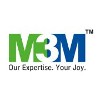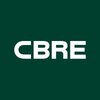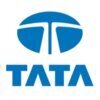Senior Quality Engineer
300+ Senior Quality Engineer Interview Questions and Answers

Asked in SFO Technologies

Q. How did you approach the transition from the mechanical automotive industry to the electrical wiring harness division?
I leveraged my mechanical expertise to adapt to the electrical wiring harness division, focusing on quality assurance principles.
Conducted thorough research on electrical wiring harnesses to understand their design and functionality.
Utilized my mechanical background to identify potential quality issues in the wiring harness assembly process.
Collaborated with cross-functional teams to implement quality control measures tailored to electrical components.
Participated in training...read more

Asked in SFO Technologies

Q. What is your experience with quality tools such as the 7 Quality Control (QC) tools and the 8D problem-solving method, as well as your experience in handling customer interactions?
Experienced in 7 QC tools and 8D methodology, with strong customer interaction skills in quality assurance.
Proficient in using the 7 QC tools: Fishbone diagrams for root cause analysis, control charts for monitoring process stability.
Implemented 8D problem-solving in a project to address recurring defects, leading to a 30% reduction in customer complaints.
Conducted training sessions on quality tools for cross-functional teams, enhancing overall quality awareness and problem-s...read more

Asked in L. N. Malviya Infra Projects Group

Q. Initial setting time and Final setting time of Cement in details & proper mechanism.
Initial setting time and Final setting time of Cement refers to the time taken for the cement to change from a liquid to a solid state.
Initial setting time is the time taken for the cement paste to lose its plasticity and become rigid enough to resist certain defined pressure.
Final setting time is the time taken for the cement paste to completely harden and attain its full strength.
The setting time of cement is influenced by factors such as the type of cement, water-cement ra...read more

Asked in M3M India

Q. What types of tests have you performed on-site before, during, and after work?
Types of tests conducted before, during, and after work at a site include pre-construction testing, in-process testing, and post-construction testing.
Pre-construction testing: soil testing, environmental impact assessments
In-process testing: quality control checks, material testing
Post-construction testing: structural integrity testing, final inspection
Asked in Vigel Manufacturing Technologies

Q. Explain the alignment process you would use to align the job according to the current drawing.
I will use a precision alignment tool such as a laser level or optical alignment system to align the job as per the presented drawing.
Use a laser level to ensure the job is aligned horizontally and vertically according to the drawing
Utilize an optical alignment system to align specific features or components as per the drawing
Check for any discrepancies between the job and the drawing and make necessary adjustments

Asked in HCL Group

Q. What is involved in performing ETL testing for your project?
ETL testing ensures data integrity and accuracy during extraction, transformation, and loading processes in data warehousing.
Verify data extraction from source systems, e.g., validating records from a database.
Check data transformation rules, e.g., ensuring calculations and data type conversions are correct.
Validate data loading into the target system, e.g., confirming that all records are loaded without loss.
Perform data quality checks, e.g., ensuring no duplicates or null v...read more
Senior Quality Engineer Jobs



Asked in Sanjay Techno Products

Q. What types of controls, such as Kaizen and Poka-yoke, can be implemented to avoid critical complaints (CC) or International Health Regulations (IHR) rejections?
Implementing controls like Kaizen and Poka-Yoke can significantly reduce IHR rejections and improve quality.
Kaizen promotes continuous improvement through small, incremental changes. For example, regular team meetings to discuss quality issues.
Poka-Yoke (mistake-proofing) involves designing processes to prevent errors. An example is using color-coded components to ensure correct assembly.
Implementing standardized work procedures can help reduce variability and errors in proce...read more
Asked in Naveen Merico Engineering

Q. What can you tell me about highway Billing and Planning?
Highway Billing & Planning is a system used for managing toll collection and route planning on highways.
Highway Billing & Planning involves tracking toll collection from vehicles using electronic systems.
It also includes planning routes for efficient traffic flow and maintenance.
Examples of Highway Billing & Planning systems include E-ZPass in the US and Fastag in India.
Share interview questions and help millions of jobseekers 🌟

Asked in Powerdrive Bearings

Q. What is Measurement Systems Analysis (MSA), and why is it used in quality management?
Measurement Systems Analysis (MSA) evaluates the accuracy and reliability of measurement systems in quality management.
MSA identifies sources of variation in measurement systems, ensuring data quality.
It includes techniques like Gage R&R (Repeatability and Reproducibility) to assess measurement consistency.
For example, in a manufacturing process, MSA can determine if a measuring tool is providing consistent readings.
MSA helps in decision-making by ensuring that the data used ...read more
Asked in Vigel Manufacturing Technologies

Q. Are there any subtypes for the GD&T parameters you mentioned?
Yes, there are subtypes for the types of GD&T parameters.
Profile of a surface for flatness, straightness, circularity, etc.
Position for concentricity, symmetry, etc.
Runout for circular runout, total runout, etc.

Q. What is the role of Statistical Process Control in quality management?
Statistical Process Control (SPC) monitors and controls processes using statistical methods to ensure quality and consistency.
SPC uses control charts to track process variations over time, helping identify trends or shifts in performance.
Example: A manufacturing line uses control charts to monitor the diameter of produced parts, ensuring they remain within specified limits.
It helps in identifying the root causes of defects, allowing for timely corrective actions.
Example: Anal...read more

Asked in LTIMindtree

Q. What is a defect, and what is the defect life cycle?
Defect is a deviation from expected behavior. Defect Life Cycle is the process of identifying, reporting, and resolving defects.
Defect is a flaw or error in a product or service that deviates from its expected behavior.
Defect Life Cycle includes identifying, reporting, prioritizing, fixing, and verifying defects.
Defects can be found during testing, development, or even after release.
Defects can be classified based on severity, priority, and type.
Examples of defects include cr...read more

Asked in Amazon Development Centre India

Q. What is polymers? And how many types of rubber used in sealing industry
Polymers are large molecules composed of repeating structural units, and there are several types of rubber used in the sealing industry.
Polymers are large molecules made up of repeating units called monomers.
Rubber is a type of polymer that can be natural or synthetic.
Common types of rubber used in the sealing industry include neoprene, EPDM, silicone, and nitrile rubber.

Asked in Kiswok Industries

Q. What is your knowledge of quality management tools?
I have extensive knowledge of quality management tools such as Six Sigma, Lean, FMEA, and Root Cause Analysis.
Six Sigma: A data-driven approach to process improvement aimed at reducing defects and variation.
Lean: Focuses on eliminating waste and improving efficiency in processes.
FMEA (Failure Mode and Effects Analysis): Identifies potential failure modes in a system and their effects.
Root Cause Analysis: Methodical approach to identifying the underlying cause of a problem to ...read more

Asked in Gx India

Q. What types of documents are used in our process?
Quality engineering processes utilize various documents to ensure compliance, traceability, and effective communication.
Quality Management Plan: Outlines quality objectives and processes.
Test Plans: Define the scope, approach, resources, and schedule for testing activities.
Test Cases: Detailed documents that specify input, execution conditions, and expected results.
Defect Reports: Document issues found during testing, including severity and steps to reproduce.
Change Requests:...read more

Asked in Lenskart

Q. What are your current Key Result Areas (KRAs) and achievements to date?
My current KRA is to improve product quality by implementing effective quality control measures. Achievements include reducing defect rate by 20% and increasing customer satisfaction by 15%.
Implemented statistical process control to identify and address quality issues
Conducted root cause analysis to identify the source of defects and implemented corrective actions
Collaborated with cross-functional teams to improve product design and manufacturing processes
Conducted regular au...read more
Asked in Masl Control Cables

Q. Explain 7QC tool and short out any problem example of any one tool
7QC tools are used for quality control and problem-solving. Example: Pareto chart for identifying the most frequent defects.
Check sheet for collecting data
Pareto chart for identifying the most frequent defects
Cause-and-effect diagram for identifying root causes
Histogram for analyzing data distribution
Scatter diagram for identifying relationships between variables
Control chart for monitoring process performance
Flowchart for visualizing process flow

Asked in APPL

Q. How many clauses are in ISO 9001?
ISO 9001 has 10 clauses, internal audit program has 6 clauses, and planning has no specific number of clauses.
ISO 9001 has clauses related to context of the organization, leadership, planning, support, operation, performance evaluation, and improvement
Internal audit program has clauses related to audit planning, audit preparation, audit execution, audit reporting, audit follow-up, and audit records
Planning does not have a specific number of clauses as it can vary depending on...read more

Asked in S&P Global

Q. Describe the complete automation framework and flow you would use if you needed to create the framework from scratch.
Creating an automation framework from scratch involves designing the structure, selecting tools, implementing test cases, and integrating with CI/CD pipelines.
Design the framework structure including folders for test scripts, test data, configuration files, and utilities
Select appropriate automation tools such as Selenium for web testing or Appium for mobile testing
Implement test cases using chosen tools and programming languages like Java or Python
Integrate the framework wit...read more

Asked in Tata Steel Downstream Products

Q. What are Cp and Cpk, and how are they used in process capability analysis?
Cp and Cpk are metrics used to assess process capability and performance in manufacturing and quality control.
Cp (Process Capability) measures the potential capability of a process by comparing the width of the process spread to the specification limits.
Cpk (Process Capability Index) measures how centered the process is within the specification limits, accounting for process mean shift.
A Cp value greater than 1 indicates that the process has the potential to produce within sp...read more

Q. What is the difference between a bar graph and a histogram?
A bar graph displays categorical data with rectangular bars, while a histogram represents the distribution of numerical data.
Bar graphs represent discrete categories (e.g., sales by product).
Histograms show continuous data distributions (e.g., test scores).
In bar graphs, bars are separated; in histograms, they touch.
Example of bar graph: Number of cars sold by brand.
Example of histogram: Frequency of ages in a population.
Asked in Masl Control Cables

Q. How many levels PPAP documents AND Explains each
PPAP documents have 5 levels: Level 1, Level 2, Level 3, Level 4, and Level 5.
Level 1: Part Submission Warrant (PSW)
Level 2: Part Submission Status
Level 3: Part Submission Initial Sample Inspection Report (ISIR)
Level 4: Part Submission Performance Test Results
Level 5: Part Submission Bulk Material Test Results

Asked in Tech Mahindra

Q. Does sheet metal parts required fixtures? How do you hold?
Yes, sheet metal parts often require fixtures to hold them in place during manufacturing processes.
Sheet metal parts often have complex shapes that require fixtures to ensure accurate and consistent manufacturing.
Fixtures can be custom-designed to hold the sheet metal parts securely in place during processes such as cutting, bending, and welding.
Common types of fixtures for sheet metal parts include clamps, jigs, and specialized tooling.
Using fixtures helps to improve the qua...read more

Asked in ServiceNow

Q. How would you write test cases for Prime customers during Amazon's Big Billion Day sale?
Test cases for Prime customers in Amazon Big Billion Day
Verify that Prime customers have access to exclusive deals and discounts
Check if Prime customers receive faster shipping options compared to non-Prime customers
Ensure that Prime customers are able to access Prime Day deals and promotions
Confirm that Prime customers receive special perks such as early access to deals

Asked in Mitsubishi Electric Automotive India

Q. Example of customer quality and how to solve customer problems
Customer quality refers to meeting or exceeding customer expectations. To solve customer problems, it is important to listen, empathize, and take action.
Listen actively to the customer's concerns and ask clarifying questions
Empathize with the customer and acknowledge their frustration
Take ownership of the problem and provide a clear plan of action to resolve it
Follow up with the customer to ensure their satisfaction
Continuously gather feedback from customers to improve the ov...read more
Asked in Powerdrive Bearings

Q. How many clauses are included in the ISO 9001 standards?
ISO 9001 includes 10 clauses that outline requirements for a quality management system.
Clause 1: Scope - Defines the purpose and applicability of the standard.
Clause 2: Normative References - Lists documents referenced in the standard.
Clause 3: Terms and Definitions - Provides definitions for key terms used in the standard.
Clause 4: Context of the Organization - Requires understanding the organization and its context.
Clause 5: Leadership - Emphasizes the role of top managemen...read more
Asked in Powerdrive Bearings

Q. What are the differences between ISO 9001 and IATF 16949?
ISO 9001 is a general quality management standard, while IATF 16949 is specific to the automotive industry.
ISO 9001 applies to any organization, while IATF 16949 is tailored for automotive suppliers.
IATF 16949 includes additional requirements for defect prevention and continuous improvement specific to automotive processes.
ISO 9001 focuses on customer satisfaction and quality management principles, whereas IATF 16949 emphasizes risk management and product safety.
IATF 16949 re...read more
Asked in Powerdrive Bearings

Q. What are the different types of tolerance in engineering?
Tolerance in engineering refers to permissible limits of variation in physical dimensions and properties of materials.
1. Dimensional Tolerance: Specifies allowable variations in size, e.g., a shaft diameter of 10mm ±0.1mm.
2. Geometric Tolerance: Defines allowable variations in form and orientation, e.g., flatness or parallelism.
3. Positional Tolerance: Relates to the allowable variation in the location of features, e.g., hole placement.
4. Surface Finish Tolerance: Specifies t...read more
Asked in Powerdrive Bearings

Q. What are the steps involved in the 8D analysis process?
The 8D analysis process is a problem-solving methodology used to identify, correct, and eliminate recurring issues.
D1: Establish the Team - Form a cross-functional team with the necessary expertise to address the problem.
D2: Describe the Problem - Clearly define the problem, including who, what, when, where, and how it occurs. Example: '10% of products failed quality checks.'
D3: Implement Interim Containment Actions - Take immediate actions to contain the problem and prevent ...read more
Asked in Powerdrive Bearings

Q. What is Statistical Process Control (SPC) in quality management?
Statistical Process Control (SPC) uses statistical methods to monitor and control processes, ensuring consistent quality in production.
SPC involves the use of control charts to track process performance over time.
It helps identify variations in processes, distinguishing between common cause and special cause variations.
For example, in manufacturing, SPC can monitor the diameter of a produced part to ensure it stays within specified limits.
SPC can lead to improved product qual...read more
Interview Questions of Similar Designations
Interview Experiences of Popular Companies








Reviews
Interviews
Salaries
Users

















